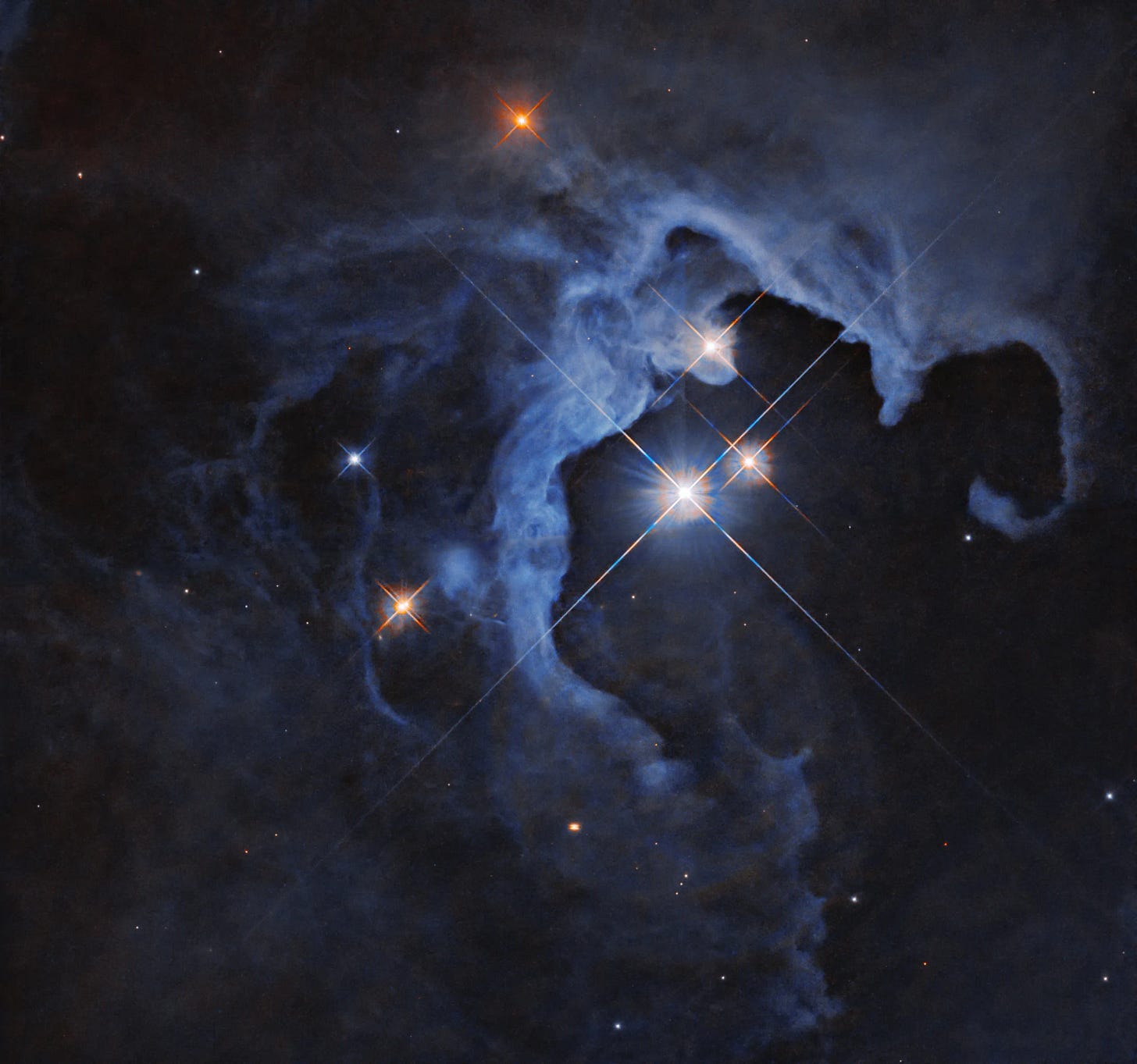A defunct Russian satellite broke up into pieces in space last week, causing members on the International Space Station to take precautionary cover. | Space—it’s never not interesting.
Look to the skies, friends! | A recurring nova explosion (not a supernova, but a recurring nova, one that happens as a result of a thermonuclear explosion on the surface of a star) on a dwarf star 3,000 light years away will shine in the skies sometimes between now and September.
What’s on in the July sky, anyway? | Check out the Space.com July calendar of stargazing events.

An artist's impression of T Coronae Borealis star system with a red giant star and a white dwarf. A celestial dance between the two about 3,000 light years away will result in an outburst so bright it can be seen by the naked eye for several days. Illustration: NASA Goddard Space Flight Center/PA. Image retrieved from The Guardian. Ever wondered what you’d do if you found a piece of space junk? | Now there’s a hotline you can call!
One for all the LEGO fans out there…which is everybody, right? | LEGO-inspired “space bricks” could help scientists design moon habitats.
If terraforming emits greenhouse gases, we now have the technology to detect it. | Look how far JWST can see.
This desert moss is so hardy scientists are looking to use it to establish plants on Mars. (But as usual, the question remains: just because we can terraform Mars, does that mean we should?) | Meet Syntrichia caninervis.
The Stars Foretell Our Doom—prime candidate for favourite scary headline of the week! | Here’s what will happen in our solar system five billion years from now, when the sun runs out of fuel.
The work on Canadarm3 has begun! | Canada’s next-generation robotic arm will eventually become part of the Gateway Space Station, which will itself be a significant part of the Artemis lunar landing missions planned in the next decade. To infinity and beyond, etc.
Let’s take an up-close-and-personal tour of The Pillars of Creation, shall we? | Hubble and JWST: best duo of the century.
SpaceX has launched its second generation of US spy satellites. | All of the things that we can do with our brainpower, and we spend it on things like this.
A slice of the Moon on Earth! | Astrobotic reveals its “proving ground” for lunar missions.
JWST has spotted some strange shapes above Jupiter’s resident storm, the Great Red Spot. | They are probably not alien in nature and probably have a very run-of-the-mill, standard physics explanation. Probably.
And finally: check out this stunning Hubble image of a trinary (triple star) system located in the constellation Taurus, about 550 light years away. | Big thanks to Phil Plait, over at Bad Astronomy Newsletter, for highlighting this one!




